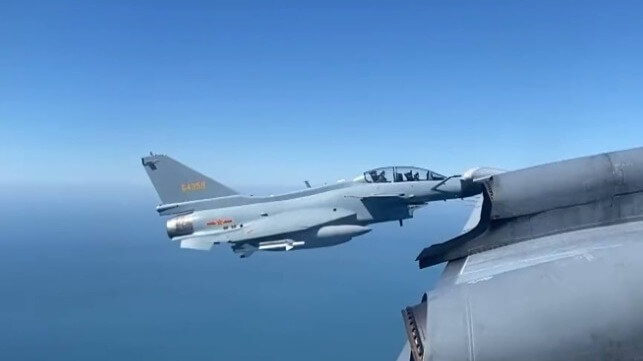Report: Chinese Jets Made "Unsafe" Passes at Canadian Navy Helicopter

dChina's fighter pilots have a reputation for getting close to foreign maritime patrol aircraft, but a recent encounter with the Royal Canadian Navy was more serious than most. A pilot from the Canadian frigate HMCS Ottawa told CNN that a Chinese PLA Navy fighter jet had blown past his antisubmarine warfare helicopter twice over the weekend, creating high risk for the aircrew. On one of the passes, a Chinese fighter released flares in front of the helicopter in an "unsafe" and "unprofessional" intercept.
On Sunday, HMCS Ottawa was tracking a previously-located Chinese submarine off the coast of the Paracel Islands, a contested archipelago claimed by Vietnam and occupied by China. The operating area was about 20-30 nautical miles offshore, in international waters and international airspace, according to CNN.
The pilot, Maj. Rob Millen, told CNN that he was transiting on his way back to HMCS Ottawa when Chinese fighter jets intercepted his helicopter, passing at close range. They circled "closer and closer," he said, creating turbulence. The situation was unsafe, and he broke off by reducing altitude to just 200 feet, where it would be harder for the fighters to operate.
In the second encounter, a jet fired off flares in front of Millen's helicopter, riskding damage to its rotors or engines, he said. The aircrew and their Sikorsky Cyclone made it safely back to the deck of the Ottowa.
CNN identified the Chinese aircraft as J-11 air superiority fighters belonging to the People's Liberation Army Naval Air Force (PLANAF).
The U.S. government has previously reported that Chinese fighter intercepts have been getting more dangerous over the past two years. Last month, the U.S. Department of Defense released a collection of declassified videos showing 15 different "coercive and risky" interactions between Chinese fighter pilots and U.S. Navy surveillance planes over the South China Sea. The videos show Chinese fighters conducting close-quarters maneuvers, including flying in front of Navy aircraft and approaching to within as little as 15 feet. In one incident, a Chinese pilot cursed at an American P-8 Poseidon's aircrew as he engaged in an "unsafe" intercept.
Previous Royal Canadian Navy and U.S. Navy reports of encounters with Chinese jets have all involved fixed-wing aircraft, and close brushes with helicopter assets have not been previously discussed. Flares, however, have been used in some of the past run-ins with American aircraft, according to the Pentagon.
